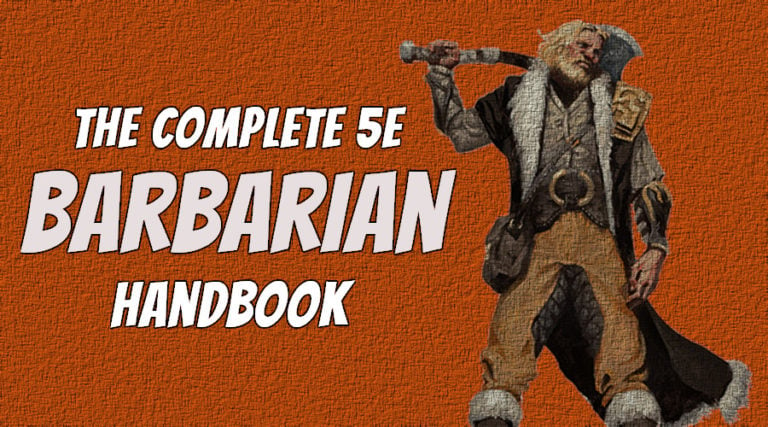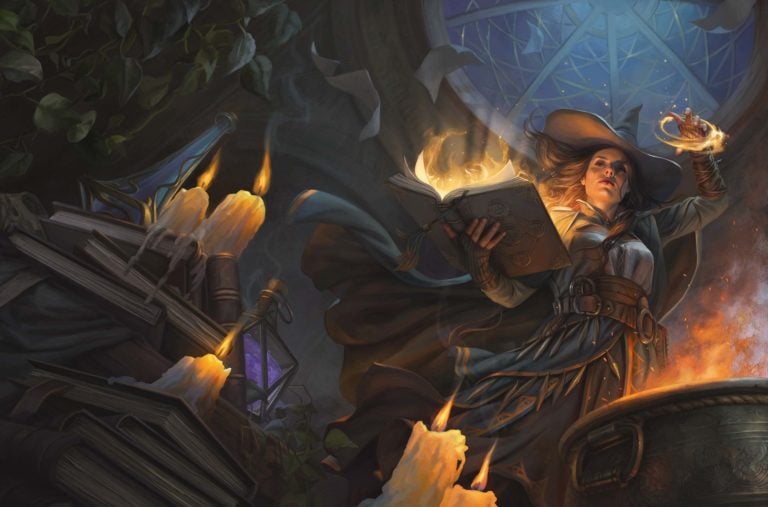A Review of the New Theros Subclasses | New 5E Subclasses
It’s that time again – a new release from Wizards of the Coast! This time around it’s a new 5E/MTG crossover with the Mythical Odysseys of Theros. This setting is an interesting mix of ancient Greek aesthetic plus the outlandish magic that comes with an MTG realm. For D&D nerds, the highlight of this new offering might be the two new Theros subclasses. We’ll dive into both of them below!

Theros Subclasses Guide
Both of the new Theros subclasses are for classes – the paladin and the bard – that already have strong options for their archetypes. That said, both of these subclasses have some interesting if situational features.
Bard – College of Eloquence
See Our Complete Guide to the College of Eloquence
Not just a song and dance man, an Eloquence Bard is the master of the spoken word. At its core, this subclass is about building the ultimate “face” of your party. This is a role that bards are inherently strong at, but this subclass really goes the extra mile.
The good stuff starts at Level 3, where Silver Tongue lets you avoid persuasion or deception checks by treating any roll of 9 or under as a 10.
The rest of the subclass build on the basic tenets of the class. At level 6 you can use Bardic inspiration to lower an enemy’s saving throw or let a friend keep their inspiration die if their roll fails when they use it the first time.
Your use of inspiration really explodes at Level 14, when you can hand out an additional inspiration die without expending Bardic Inspiration each time a person uses the inspiration die you gave them.
All told, this class really boosts some of the things bard already do well.
Paladin – Oath of Glory
See Our Complete Guide to the Oath of Glory
The Oath of Glory is a tenet based on acts of heroism. Paladins that follow this path believe they are destined for greater things. To achieve these goals, you gain a range of features that start with a strong list of Oath Spells. Magic Weapon, Haste, and Flame Strike are all great options.
All Paladin Oaths gain a Divine Smite, but only the Glory Paladin can dish out temporary hitpoints to nearby friendlies when using their smite ability. At level three you can also channel your divinity for advantage on strength of dexterity checks, plus you can carry more and jump farther. Kind of a weak option for channel divinity.
Your aura skill is an interesting option as well. Aura of Alacrity boosts your walking speed by 10 feet. As an aura ability, it also speeds up any allies that start their turn within 5 feet of you. Situational but interesting!
At level 15, you get Glorious Defense. This lets you use your reaction when you or another creature within 10 feet is hit by an attack roll. Not only can you add your charisma modified to their AC, but you get a weapon attack against the attacking creature if they miss. This is a great part of this subclass.
Finally, Level 20 provides some nice options as well. For one minute, you can use Living Legend to gain advantage on all charisma checks, cause attacks that would otherwise miss to hit, and reroll some failed saving throws. This is a short window, but it provides great benefits. What’s even better is that you can use this once per long rest, OR you can expend a 5th-level spell slot to do it again.
See our Mythic Odysseys of Theros ReviewNerds and Scoundrels
That wraps up our Theros Subclasses guide. We hope you are as excited about this release as we are, and we’d love to see your thoughts in the comments section below!






